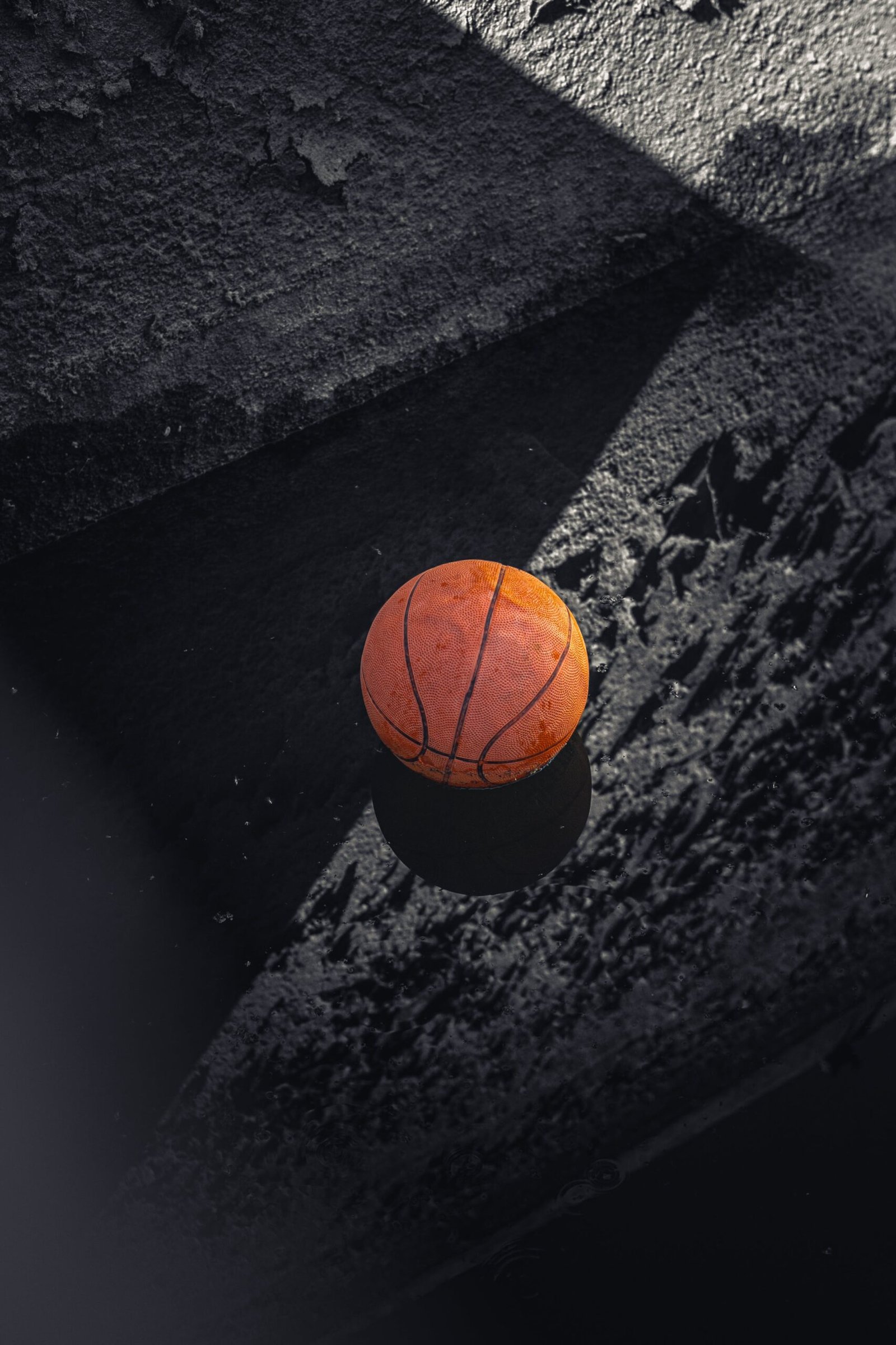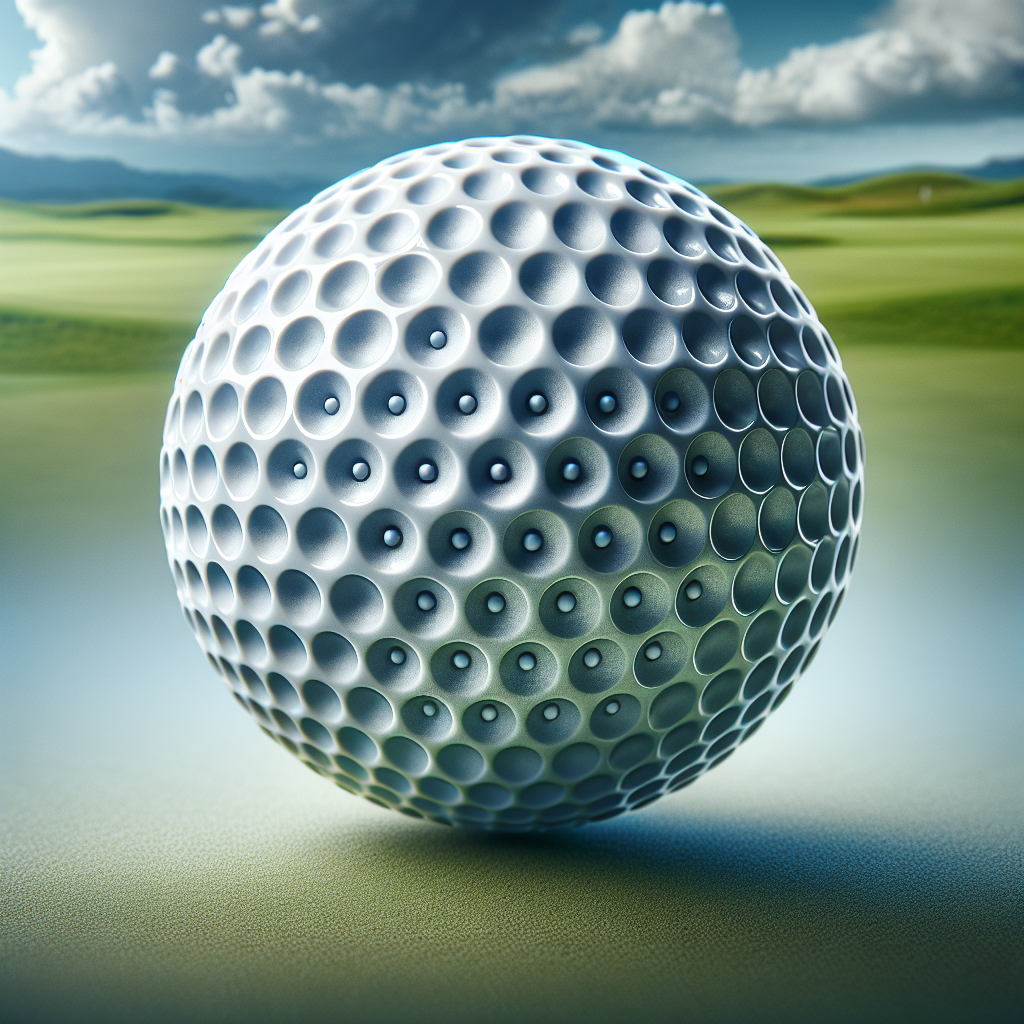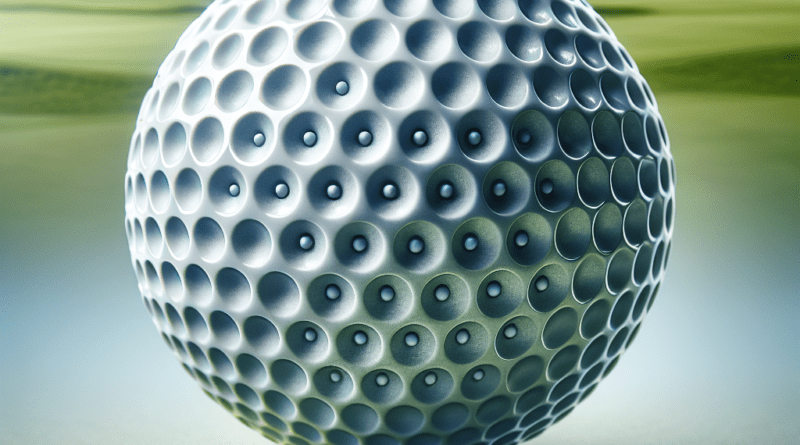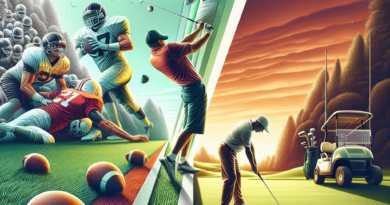Understanding the Role of Dimples on a Golf Ball
In “Understanding the Role of Dimples on a Golf Ball,” we meticulously explore each aspect of golf, with a distinct focus on the significance of dimples on a golf ball. Our coverage ranges from the basics like golfing terminology and key concepts to the technicalities, such as how to hold or swing a golf club, and the methodologies for calculating the golf handicap. Furthermore, we also provide valuable insights into renowned golf courses, golf manufacturers, television broadcasts and how to watch live golf tours. We even touch on the history of golf, including the fascinating origins of the game. But, the heart of our discussion concerns understanding the crucial role of dimples on a golf ball — a design feature that, as we’ll uncover, greatly impacts the game’s dynamics.

The Purpose of Dimples on a Golf Ball
Dimples on golf balls serve a crucial role in how they perform during a golf game. These little depressions on the surface of a golf ball have significant impacts on how a golf ball travels through the air, influencing its lift, drag, and trajectory.
The Physics Behind Dimples
The physics behind the dimples on a golf ball is quite fascinating. If you have ever wondered why a smooth golf ball does not travel as far as a dimpled one, it’s all about air resistance or drag. A smooth ball moves through the air, pushing the air in front of it, whereas dimples force the airflow towards the back, creating turbulence in the layer of air around the ball. This turbulence reduces the drag on the ball, enabling it to travel further.
Historical Development of Dimpled Golf Balls
The dimpled golf ball was not an initial design but a development following the observation that older, scuffed golf balls performed better than new, smooth ones. In the early days of golf, players realized that their older balls, which had scratches and roughness, traveled a longer distance. Manufacturers then started to mold balls with these patterns, eventually leading to the now standard dimpled design.
Physical Characteristics of Golf Ball Dimples
Shape and Size of Dimples
While the shapes of the dimples on golf balls can vary, the most commonly used type is spherical. The diameter of a standard dimple is usually about 4 millimeters, and the depth is about 0.25 millimeters. The specific shape and size of the dimples can affect the distance a ball will travel and the speed at which it will spin.
Number of Dimples on a Typical Golf Ball
The number of dimpiles on a golf ball can vary, but most have between 300 and 500 dimples. The exact number is determined by the design and intended use of the ball.
The Science of Golf Ball Dimples
The Bernoulli Principle and Golf Balls
The Bernoulli Principle, which is a concept in fluid dynamics, plays a significant role in understanding how dimples affect the motion of a golf ball. The principle states that an increase in a fluid’s speed occurs simultaneously with a decrease in its pressure. When applied to golf balls, the fluid is the air. The dimples on the ball reduce pressure on the front and increase it on the top, creating lift and allowing the ball to rise and travel further.
Effect of Dimples on Lift and Drag
The primary purpose of dimples on a golf ball is to decrease drag and increase lift. As previously discussed, these dimples cause turbulence in the air around the ball, which reduces the drag behind the ball. This allows the ball to travel further than a smooth ball would.
How Dimples Affect Golf Ball Trajectory
Dimple Patterns and Trajectories
The pattern and arrangement of dimples can significantly impact the trajectory of a golf ball. Certain patterns can promote higher lift, while others can potentially decrease the ball’s sidespin. This can have noticeable effects on the accuracy and distance of a golfer’s shot.
Role of Dimples in Flying Distance and Direction
The main role of golf ball dimples is to maximize air time and stabilize the golf ball’s flight. This occurs as the dimples create a thin layer of turbulence that clings to the ball’s surface and allows it to cut through the air, enhancing both its distance and direction.

The Role of Golf Ball Material and Dimples
How Golf Ball Composition Interacts with Dimples
The material of a golf ball not only affects its overall performance but can also interact with the dimples to influence the flight characteristics. For instance, softer materials can potentially change the effectiveness of the dimples, impacting the ball’s lift and drag.
New materials and Innovation in Dimple Design
With technological advancements, new materials and innovative dimple designs are continuously being introduced. These innovations aim to improve the performance characteristics of golf balls. For instance, multi-layer balls with varying dimple sizes are one such innovation that allows for optimized carry and roll performance.
Dimple Design and Golf Ball Performance
How Different Dimple Designs Affect Performance
Different dimple designs can have a significant impact on golf ball performance. Variations in dimple depth, pattern, arrangement, and the number of dimples can influence the lift-to-drag ratio and ultimately affect the trajectory, distance, and stability of the ball’s flight.
Latest Research in Dimple Design
The latest research in dimple design is continually evolving, seeking ways to enhance golf ball performance. Scientists and manufacturers are delving deeper into understanding the aerodynamics of golf balls and how various dimple designs can optimize these factors.

Pros and Cons of Dimpled Golf Balls
The Advantages of Dimpled Golf Balls
Dimpled golf balls have advantages over their smooth counterparts. The most significant advantage is their ability to travel longer distances due to reduced drag. The dimples also create lift which allows the ball to ascend, and more stability in their flight path.
Potential Drawbacks and Considerations
Despite their benefits, dimpled golf balls also have potential drawbacks. The design and positioning of dimples may cause an undesirable spin or trajectory in certain situations. Also, incorrect dimple designs could lead to poorer performance, underscoring the necessity for precise design and manufacturing.
Regulation and Standards for Golf Ball Dimples
Rules About Golf Ball Dimples from the United States Golf Association (USGA)
To maintain fairness and integrity in the game of golf, the United States Golf Association (USGA) has set rules regarding golf balls, including their dimple design. These rules regulate the size, weight, initial velocity, and overall distance that balls travel to ensure uniformity.
How Manufacturers Comply with Regulations
Manufacturers must follow these regulations when producing golf balls. Not only must they adhere to the standard size and weight limitations, but they must also ensure the balls do not exceed the maximum distance set by the USGA. Dimple design, whilst varied, must therefore not contravene the regulations to be acceptable for competition use.

Major Manufacturers and Their Dimple Designs
Unique Dimple Designs from Leading Golf Ball Manufacturers
Leading golf ball manufacturers often patent their unique dimple designs which contribute to the specific performance characteristics of their balls. For instance, some brands may have larger or shallower dimples for better long-distance performance, while others may have smaller, deeper dimples that allow for greater control.
How Various Brands Approach Dimple Design
Different brands approach dimple design in unique ways to enhance their product’s performance. While all designs aim to reduce drag and increase lift, the specific strategies may vary. This difference is often a result of proprietary research and technological advancements.
The Future of Golf Ball Dimples
Predicted Trends in Dimple Design
Trends in golf ball dimple design indicate a continuous evolution towards optimizing golf ball aerodynamics. Future designs could give players more control over their shots by further reducing drag and optimizing lift.
How Emerging Technology Could Impact Dimples
Emerging technology could significantly impact golf ball dimple design and function. Advancements in material science and manufacturing processes could allow for the creation of dimples that are more efficient at reducing drag, improving lift, and optimizing flight paths.





